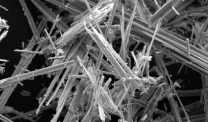New Research Links Talcum Powder to Ovarian Cancer
Research & Clinical TrialsWritten by Travis Rodgers | Edited By Amy Edel

According to new research released in the Journal of Clinical Oncology, applying talcum powder to the genitals can cause ovarian cancer. The study also found the risk of ovarian cancer is higher for people who used talc-based powder for longer periods of time or more frequently.
This research from the National Institutes of Health could have a major impact on the nearly 54,000 lawsuits still looming against Johnson & Johnson. Plaintiffs claim the company’s talc-based baby powder can cause ovarian cancer.
The newly released study involved more than 50,000 women in the U.S. between the ages of 35 and 74 years old between 2003 and 2009. Every woman in the study had a sister that had been diagnosed with breast cancer, which means they’re at a higher risk of developing breast or ovarian cancer.
“This study is quite timely,” Leigh O’Dell told NBC News. “We feel like it completely affirms and confirms the position taken by plaintiffs’ experts.”
O’Dell is the co-lead counsel for the plaintiffs’ steering committee, which is a group of attorneys appointed to act on behalf of those with pending cases against J&J. He is a principal at Beasley Allen Law Firm.
J&J’s Legal Troubles and Asbestos History
Erik Haas, J&J’s worldwide vice president of litigation, argues the new study from the NIH doesn’t establish causality or implicate a specific cancer-inducing agent. He claims, “This study does not change the overwhelming evidence that talcum powder does not cause ovarian cancer.”
J&J has long argued a convincing link between talc and ovarian cancer hasn’t been confirmed. The company has continued to claim its products are safe despite facing thousands of personal injury and wrongful death lawsuits.
The majority of the lawsuits against the company have been consolidated into a single federal case in New Jersey set to go to trial in December 2024. J&J recently offered to pay $6.475 billion to settle ovarian cancer lawsuits nationwide.
If the offer is accepted, it would settle 99.75% of the remaining talc lawsuits in the U.S. At least 75% of the claimants need to vote in favor of the proposal for it to be approved.
J&J has lost several multi-million dollar ovarian cancer and mesothelioma lawsuits. The company has paid an estimated $1 billion on its legal defense in talc cases.
Court documents show J&J knew its talc was contaminated with asbestos as early as the 1950s. A Reuters investigation in 2018 revealed the company discussed the problem in the 1970s. The company never reported findings to the U.S. Food and Drug Administration.
Global sales of J&J’s talc-based baby powder ended in 2023. The company now sells a cornstarch-based baby powder. J&J claims the change was made to avoid further “misinformation” and falling demand for the product.
Dangers of Asbestos
Both talc and asbestos are naturally occurring minerals that form close together in similar conditions and are difficult to separate. Mined talc deposits often contain asbestos.
Asbestos fibers can become trapped inside your body if inhaled or ingested, leading to inflammation or scarring. Several decades after exposure, a number of benign and malignant asbestos-related diseases can develop. There is no amount of asbestos exposure that is considered safe. Exposure to asbestos is the leading cause of mesothelioma.
Public domain image courtesy of Duane Lempke






